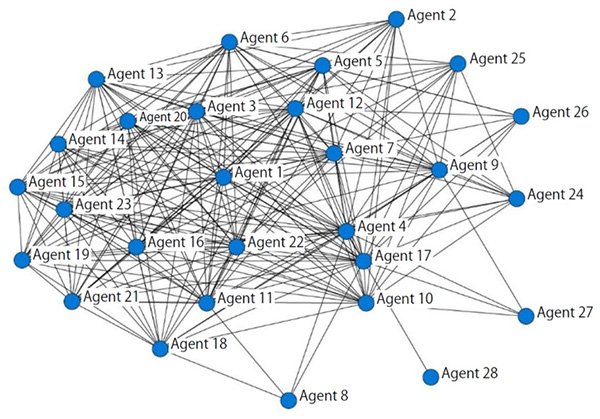Researchers from Tohoku University modeled the process by which public opinions evolve regarding the development of a geothermal power plant.
The agent-based simulation, described in an article published Feb 28 in Scientific Reports, illuminated how the diverse opinions of stakeholders converge to consensus through a series of personal interactions.
Geothermal development in Japan
Japan has abundant geothermal potential, yet the total capacity of geothermal power plants has remained largely unchanged for more than a decade. Further development of geothermal energy initiatives has been thwarted by the country's reliance on nuclear power and by competing local interests. Owners of hotels near natural hot springs that are popular destinations for locals and tourists, for example, have opposed the development of geothermal power plants.
Following the March 2011 Great East Japan Earthquake and Tsunami that damaged the Fukushima Daiichi nuclear power plant, visits to hot springs in the nearby town of Tsuchiyu Onsen fell dramatically. While it harmed the local economy, the event enabled consensus around developing geothermal power. A volunteer-led organization assisting in economic recovery efforts planned a geothermal project, and a 400kW binary-cycle power plant began operating in 2015. Some of its 100-million-yen (about US$840,000) annual proceeds are reinvested in Tsuchiyu Onsen community development.
Modeling stakeholder opinions
As public opinion has become increasingly significant in the actualization of resources development projects, methodologies to map the diverse opinions of stakeholders are needed. "Although there are currently many unrelated methodologies employed to understand the characteristics of social acceptance, no standard practices are emerging," says study author Noriyoshi Tsuchiya, professor of Environmental Studies.
Previous modeling of attitudes towards geothermal development in communities have fallen short of capturing people's diverse opinions. The Tohoku University researchers aimed to increase model validity. "Data-driven parameterization is needed to assess the opinion dynamics in local communities in which the characteristics of each stakeholder have a significant impact on opinion formation," explains Tsuchiya.
Their study used agent-based modeling (ABM) to simulate how stakeholders ("agents") form opinions as they interact. First, agents choose their interaction partners. Next, agents exchange their opinions with the partners and update their opinions. By repeating these actions, the model reproduces community opinion formation and demonstrates the behavioral trends behind consensus-building.
To garner data for model inputs, researchers surveyed a sample of 28 individual stakeholders affected by the power generation project in Tsuchiyu Onsen; these included hotel owners, companies, and government officials. Survey responses were gathered based on a 5-point Likert scale, and a parameter estimation method was used to extract appropriate parameters from various factors through a Bayesian Network.

Factors affecting opinion formation
The factors that strongly affected opinion formation were: 1) attributes of stakeholders (hot spring owners expressed more negative opinions on geothermal development); 2) locations of stakeholders geographically (agents tended to cluster into opinion groups); and 3) presence of influential individuals holding important positions in local organizations.
If the model is run repeatedly, consensus is eventually achieved around geothermal development as long as opinions evolve through personal interactions. "In this model, the opinions of agents approach each other...and finally converge to a consensus if there are no special conditions, such as the presence of agents who maintain their opinion," says Tsuchiya.
The modeling provides a quantitative description of community consensus around a proposed project, a phenomenon previously described qualitatively. Says Tsuchiya, "Using this modeling method, it is possible to conduct thought experiments on the maturation process of social acceptance of geothermal energy, and to set appropriate development goals for the region."
Next steps
The authors hope to further improve the approach and recommend increasing the sample size of the survey as a step in refining the model.
- Publication Details:
Title: Agent Based Simulation with Data Driven Parameterization for Evaluation of Social Acceptance of a Geothermal Development: A case study in Tsuchiyu, Fukushima, Japan
Authors: Shuntaro Masuda, Kyle Bahr, Noriyoshi Tsuchiya, Tatsuya Takemori
Journal: Scientific Reports






